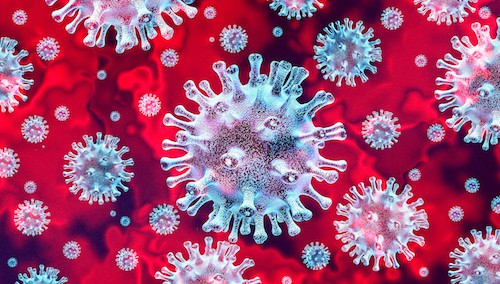
Researchers have discovered that the novel coronavirus – which causes the respiratory disease COVID-19 – remains stable on surfaces for several hours to days.
The new study, undertaken by US National Institutes of Health (NIH), CDC, UCLA and Princeton University scientists, found that the novel coronavirus – also known as SARS-CoV-2 – could still be detected and remained stable in aerosols for up to three hours, four hours on copper, 24 hours in cardboard and up to two to three days on plastic and stainless steel.
The findings uncover some unknown information about a virus which has spread across the globe at an exponential rate, infecting over 205,000 people so far and causing more than 8,000 deaths.
The research suggests that people could become infected with the virus through air transmission or after touching contaminated objects, which stay infectious for a sustained period of time.
NIH scientists also compared how the environment affects the new coronavirus, compared to its predecessor, SARS-CoV-1 which causes SARS. SARS-CoV-1 is the most closely related coronavirus to the new infection, which causes COVID-19.
In the stability study both viruses behaved in a similar way, which made it difficult for the researchers to determine why COVID-19 has spread at a faster and more significant rate than SARS.
However, the researchers did highlight that emerging evidence suggests that people infected with SARS-CoV-2 could be infecting others without recognising symptoms, or even before symptoms appear – this makes the new coronavirus particularly hard to control.
Changes in the temperature and humidity of the environment could also affect the stability of SARS-CoV-2 – Vincent Munster, head of the virus ecology section at Rocky Mountain Laboratories and a leader of the NIH study said “(we’re) currently running follow-up experiments to investigate the effect of temperature and humidity in more detail”.
Also, in comparison to SARS, secondary cases of COVID-19 infections appear to be occurring mostly in community settings rather than healthcare settings.
Despite this, the scientists maintained that healthcare settings are also vulnerable to the introduction and spread of the virus, and the stability of the virus on surfaces could contribute to its transmission in these settings.
The NIH recently received the first batch of Moderna’s investigational COVID-19 vaccine candidate for phase 1 testing, with the first patient being dosed earlier this week.
Although the vaccine was developed in a record time-frame – 42 days from sequence selection to delivery – experts have warned that a vaccine will not be available for public use for at least a year.
The wait for a vaccine and therapeutics against the novel coronavirus means that research into how it spreads and affects the body are particularly crucial.




